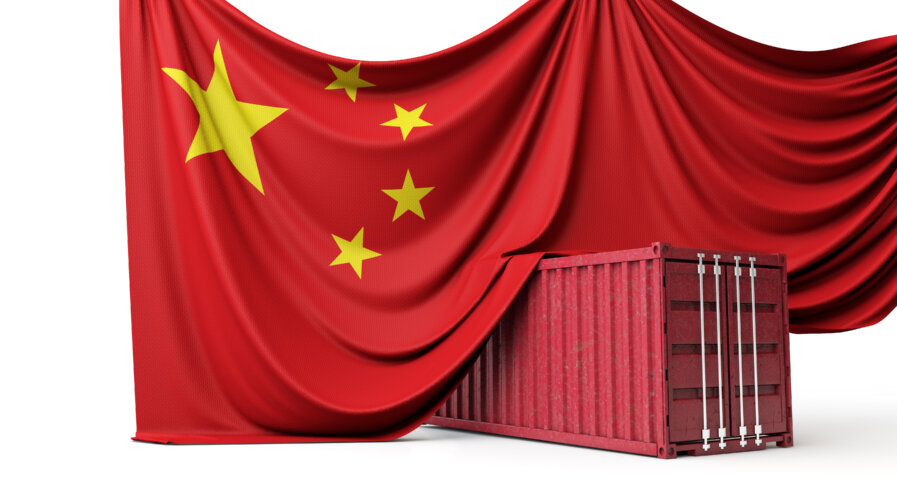
China’s economic data signal improvement, but supply chains remain tricky.Source: Shutterstock.
China: Economic data signals improvement, but supply chains remain tricky
|
Getting your Trinity Audio player ready... |
- The outlook in China has brightened, albeit slowly, but critical long-term challenges involving supply chains remain.
- Industrial production for the January-February period rose by 2.4%, less than the 2.6% expected by a Reuters poll.
- EY-Parthenon shares the considerations businesses must make when they tune their China supply chains for future performance.
China’s strict Covid restrictions have put the country out of sync with the rest of the world, with lockdowns and border curbs disrupting supply chains, damaging international businesses, and hurting trade and investment flows. In fact, the country’s most urgent and daunting task recently has been handling the fallout from President Xi Jinping’s abrupt and ill-prepared exit from his zero-Covid policy.
China’s National Bureau of Statistics released key economic indicators for January and February combined this week. The data, focusing on retail sales, industrial output, and investments, signals a steady recovery, with production and demand improving significantly. The figures, which mark the first full months since China ended its stringent Covid controls in early December, also indicate that the 5% GDP growth rate target for the whole year remains achievable, experts reckon.
For starters, China’s industrial production advanced 2.4% year-on-year (YoY) between January to February 2023 combined. The growth was faster than a 1.3% gain in December 2022 but less than market forecasts of 2.6%. Retail sales, too, climbed, at 3.5%, in line with expectations. Within retail sales most categories rose, but big-ticket items of autos and home appliances saw sales decline.
Fixed-asset investment – a gauge of expenditure on infrastructure, property, machinery, and equipment – rose by 5.5% in the first two months of 2023, year on year, up from a rise of 5.1% last year. Meanwhile, the urban surveyed unemployment rate stood at 5.6% in January and February, up slightly from 5.5% in December.
What stood out was the unemployment numbers for the 16-24 age group, which remained at an elevated level of 18.1%, up from 17.1% in December. “As the [lifting of the] Covid-19 prevention and control [measures] entered a more rapid and steady phase, the unimpeded economic flow was accelerated, production and demand improved notably, and the economy showed a steady recovery,” the National Bureau of Statistics spokesman Fu Linghui said.
Unfortunately, geopolitics, unilateralism, and protectionism have created pressure on global economic growth, he added. “However, the global environment is more complex than before. The inadequate demand in the economy remains prominent, and the foundation for economic recovery is not solid yet.” To recall, Beijing has refocused economic recovery this year to restore business confidence in the world’s second-largest economy.
After its economy grew by 3% last year, China has set a gross domestic product growth target of around 5% for this year.
What does the data mean for supply chains in China?
While China’s recent reopening is anticipated to bring an uplift in its national indices, EY-Parthenon believes there are still other key considerations that businesses must consider to future-proof cross-border supply chains. Mads Lauritzen, EY-Parthenon Asia-Pacific Strategy and Transformation Leader, reckons China’s February industrial output and retail sales figures are a timely opportunity to look at the dynamics of their supply chains.
“It has been anticipated that China’s reopening will uplift its national indices. If that is the case, then this is good news, but the China supply chain needs to be looked at in the broader context of a multitude of complications for executives to handle in cross-border supply chains,” Lauritzen said,
He also shared a confluence of five shocks to global supply chains. “The key point here for business leaders is that they need to consider all of the following when they tune their China supply chains for future performance. It’s not enough to look at any one factor in isolation,” he highlighted.
The five shocks include; geopolitical instability from tensions between superpowers, which Lauritzen said is making a certain amount of supply chain relocation inevitable. Then there is a demographic change from the urbanization, and a growing consumer class, within regions such as ASEAN and India for businesses to consider.
“This creates new paths to growth that ultimately require supply chain reconfiguration to capture it,” Lauritzen noted. He also reckoned that the impact of ESG needs to be managed and actively built into the supply chain strategy, which requires supply chains to be restructured. There’s also a supply chain talent crunch, particularly in Asia-Pacific, and those that manage this effectively will be better equipped to mitigate supply chain risks.
The fifth shock, Lauritzen believes, is technology changes. “Companies that adopt new technology and integrate it quickly and effectively will be able to handle supply chain reconfiguration faster than companies that don’t,” he said. Therefore, he believes it’s essential for companies to perform multidimensional assessments when examining their supply chain decisions.
“They need to carry out a risk assessment on geopolitical dynamics, but this can’t be done in isolation – it needs to be considered alongside demographic change, ESG considerations, technology change, and the supply chain talent crunch. Looking at your supply chain strategy through these multiple lenses and embedding this type of analysis into the company’s DNA will give the company a crucial advantage vis-à-vis competitors,” he concluded.
Impact on financial trading
Interestingly, China’s reopening may be the most consequential economic development of 2023 and will have a significant impact on foreign investment and commodity prices. The economic effect has been widely debated with growth projections being adjusted in real-time. Whilst some analysts, reassured by the speed of change, have forecasted China’s GDP growth rate for 2023 at 6%, research teams across the financial services landscape have been keen to note that longer term growth is expected to be slower.
For Asia Pacific’s trading communities, they need to equip themselves with the infrastructure, network services and trading communications systems to manage this reopening.
According to David Brown, Chief Commercial Officer at IPC Systems, as capital markets adjust and react to China’s reopening, ultra-low latency global connectivity will be crucial to navigating this change. Brown highlighted that financial market participants will need to use hybrid and multi-cloud platform ecosystems to trade faster and become more agile to enhance competitive advantages.
“IPC Systems have long-supported financial market participants as markets transform and evolve. Having access to a secure and resilient network that meets every compliance requirement is vital during changing market conditions,” said Brown.
READ MORE
- Safer Automation: How Sophic and Firmus Succeeded in Malaysia with MDEC’s Support
- Privilege granted, not gained: Intelligent authorization for enhanced infrastructure productivity
- Low-Code produces the Proof-of-Possibilities
- New Wearables Enable Staff to Work Faster and Safer
- Experts weigh in on Oracle’s departure from adland


